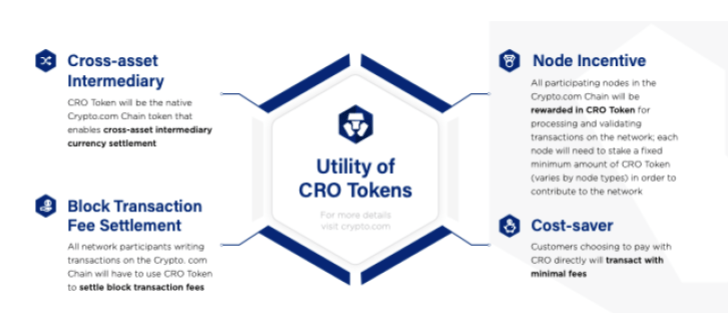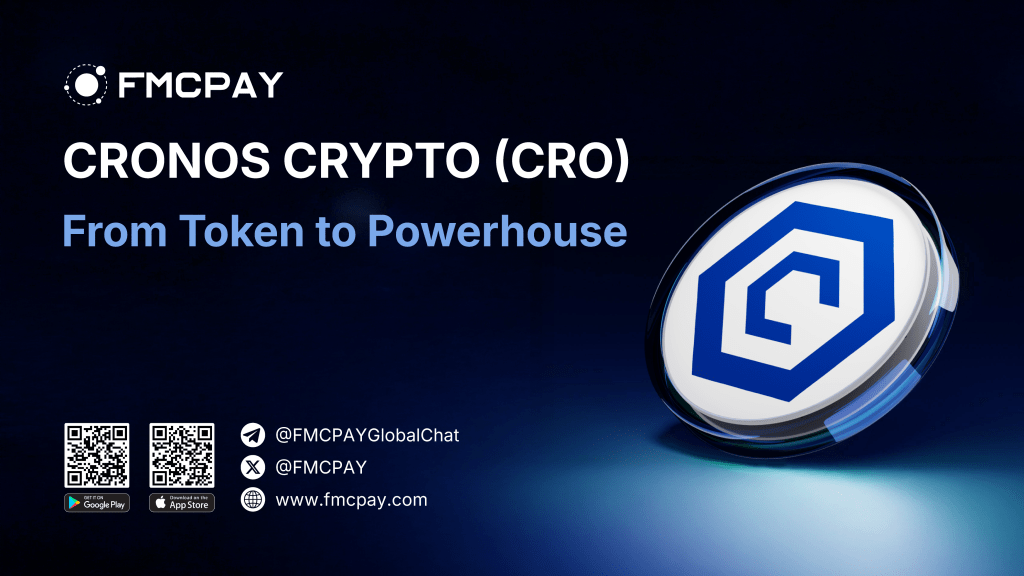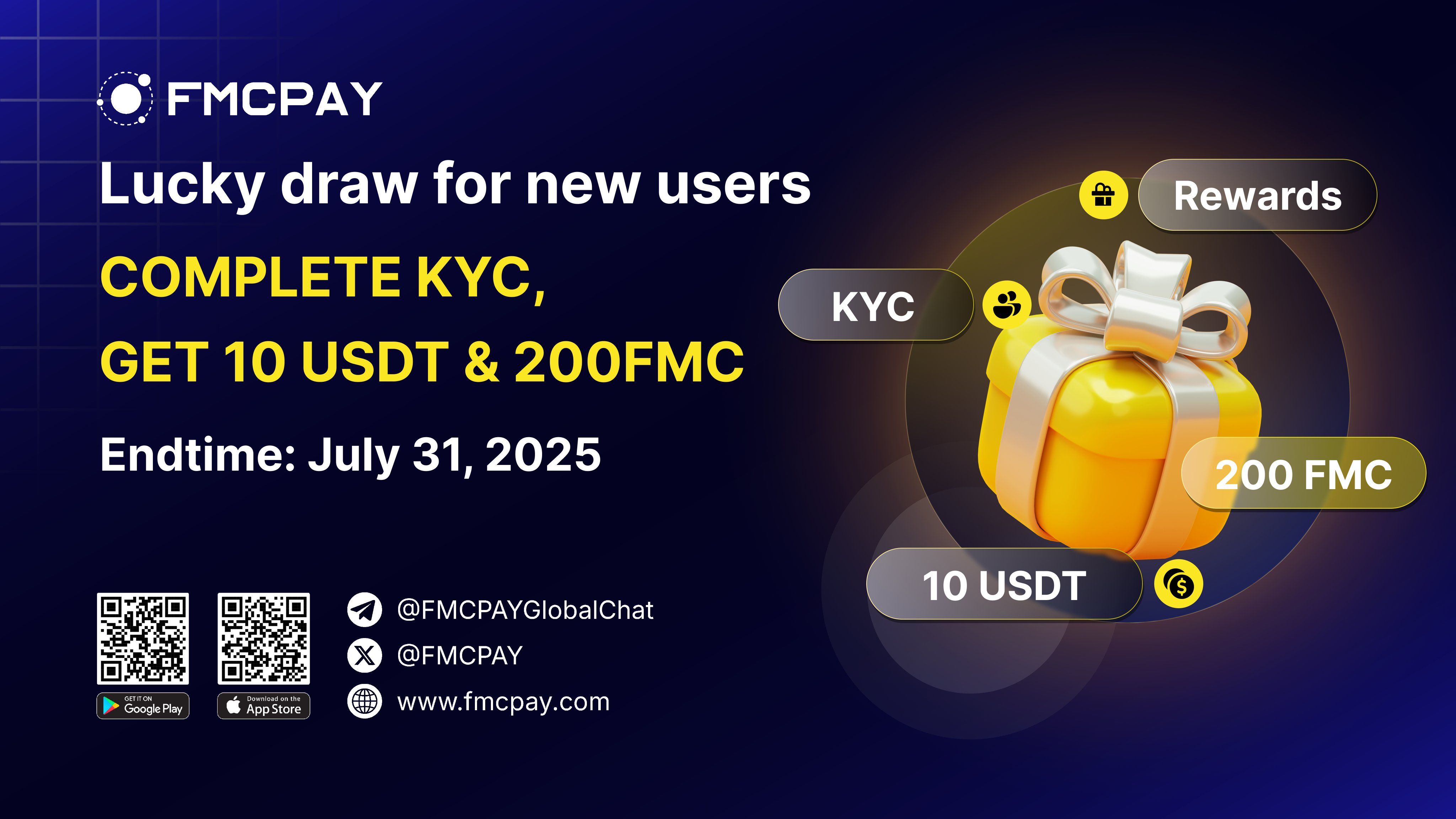Once viewed merely as a typical exchange token, Cronos Crypto (CRO) has undergone a major evolution emerging as the foundational asset of a next-generation Layer-1 blockchain. Backed by Crypto.com, one of the world’s leading centralized exchanges, Cronos Crypto now fuels a rapidly expanding ecosystem that spans DeFi, NFTs, Web3 gaming, and the metaverse. Designed for speed, scalability, and cross-chain compatibility, Cronos aims to seamlessly connect the Ethereum and Cosmos ecosystems, positioning itself as a powerful bridge in the multi-chain future.
1. What Is Cronos Crypto (CRO)?
Cronos Crypto (CRO) is the native utility token powering the Cronos Chain a Layer-1, open-source blockchain developed by Crypto.com, one of the world’s leading cryptocurrency exchanges. Originally launched as Crypto.org Coin, it was rebranded to Cronos in February 2022 to reflect its expanded role in supporting a decentralized, cross-chain ecosystem beyond simple exchange-related functions.
Cronos Crypto is designed to serve as the fuel for a high-performance blockchain that integrates DeFi, NFTs, Web3 gaming, and metaverse applications, while maintaining tight interoperability with both the Ethereum and Cosmos ecosystems.
1.1. EVM-Compatible and Cosmos-Powered
Cronos Chain is built using the Cosmos SDK, giving it access to Cosmos’s ecosystem of scalable, interoperable blockchains via the Inter-Blockchain Communication (IBC) protocol. At the same time, it is fully EVM-compatible, allowing developers to easily port or replicate existing Ethereum-based smart contracts and dApps without codebase overhauls.
This dual architecture positions Cronos as a bridge between Ethereum and Cosmos, combining the best of both worlds Ethereum’s large developer base and tooling, with Cosmos’s efficiency and interconnectivity.
1.2. The Role of CRO in the Cronos Ecosystem
The CRO token is used across multiple layers of the Cronos Crypto infrastructure. It plays a critical role in:
-
Transaction Fees: CRO is used to pay for gas on the Cronos network.
-
Staking: Users can stake CRO to help secure the network and earn passive rewards.
-
Governance (future): As on-chain governance matures, CRO holders are expected to vote on protocol upgrades and ecosystem proposals.
-
Incentivization: CRO is used to incentivize developers, validators, and early adopters through ecosystem grants, liquidity mining, and user rewards.

Through its evolving utility, Cronos Crypto (CRO) is becoming a core pillar not only for the Crypto.com ecosystem, but also for the broader Web3 movement aiming to scale and unify blockchain-based applications.
2. Cronos Crypto: Backed by Crypto.com’s Global Reach
One of the most powerful advantages of Cronos Crypto (CRO) lies in its close integration with Crypto.com, one of the world’s leading cryptocurrency exchanges with over 80 million users globally. This deep-rooted connection provides Cronos with a level of visibility, infrastructure, and adoption potential that few Layer-1 blockchains can match.
Through Crypto.com, Cronos benefits from seamless fiat onramps, making it easier for everyday users to access CRO and other Cronos-based assets using traditional payment methods. In addition, native integration across Crypto.com’s ecosystem including the exchange, DeFi wallet, crypto card, and NFT marketplace gives both users and developers an intuitive, end-to-end Web3 experience.
Perhaps most critically, Cronos enjoys a pre-existing, mainstream user base that accelerates dApp adoption and community growth. Unlike many newer chains that must build their audience from scratch, Cronos can immediately tap into a global network of retail users, crypto veterans, and institutional players already familiar with Crypto.com.
For developers, this means launching on Cronos comes with built-in exposure and simplified access to a wide audience. For users, it means interacting with Web3 apps without needing to leave the trusted Crypto.com environment. In a space where visibility and usability often make or break a project, Cronos Crypto delivers both backed by one of the most recognizable names in the industry.
3. Tokenomics of Cronos Crypto
Cronos Crypto (CRO) is the native token of Cronos Chain a public, open-source Layer-1 blockchain developed by Crypto.com. Serving as the foundational asset of the ecosystem, CRO plays a vital role in powering various aspects of the Cronos network, from DeFi and NFTs to gaming and the metaverse. With a fixed total supply of 30.26 billion tokens, the tokenomics of CRO are designed to drive long-term ecosystem growth, user adoption, and decentralized governance.

Initially launched as an ERC-20 token on Ethereum, CRO has since transitioned to become native to the Cronos Chain. This shift allows for significantly lower transaction fees and faster confirmation times, while still maintaining full compatibility with the Ethereum Virtual Machine (EVM). Developers can easily port their Ethereum-based applications onto Cronos, enabling a seamless multi-chain experience.
The token allocation is as follows:
-
30% for Secondary Distribution & Launch Rewards
-
20% for the Capital Reserve
-
20% for Long-Term Network Incentives
-
20% for Ecosystem Grants
-
10% for Community Development
This distribution model emphasizes ecosystem development, with over 60% of the total supply allocated toward initiatives that incentivize builders, reward long-term participation, and fund community and infrastructure growth. Rather than concentrating supply among insiders, the tokenomics structure supports an inclusive and developer-friendly environment.
Ultimately, the tokenomics of Cronos Crypto reflect a strategic effort to build a sustainable Web3 ecosystem not just through infrastructure, but by empowering developers and communities to create long-term value on the network.
4. Powering Interoperability: How Cronos Crypto Connects Chains and Ecosystems
In an increasingly multichain Web3 world, seamless connectivity is no longer optional it’s essential. Cronos Crypto (CRO) sits at the center of this evolution by powering one of the few blockchain ecosystems that bridges Ethereum’s developer base with Cosmos’s scalability and modularity. Built for interoperability from day one, the Cronos Chain offers developers, users, and token holders a unique environment where decentralized applications can thrive across networks.
4.1. EVM Compatibility Meets Cosmos Scalability
Thanks to its foundation on Ethermint (an EVM implementation built on Cosmos SDK), Cronos Chain allows developers to deploy Ethereum-native applications with little to no code adjustments. Smart contracts written in Solidity and deployed using familiar tools like Remix, Hardhat, and Truffle can run efficiently on Cronos with lower fees and faster finality.
Behind every transaction, the CRO token acts as the gas currency, giving developers predictable and low-cost execution a key advantage when scaling DeFi apps or Web3 games. Unlike many layer-1 chains, Cronos doesn’t ask developers to choose between ecosystems; instead, it enables them to build on Ethereum’s tools while benefiting from Cosmos’s performance.
4.2. IBC-Enabled Cross-Chain Communication
Beyond EVM support, Cronos Crypto unlocks access to the broader Cosmos ecosystem via the Inter-Blockchain Communication (IBC) protocol. This allows projects built on Cronos to interact with dozens of IBC-enabled chains from Osmosis to Cosmos Hub facilitating cross-chain token transfers, liquidity sharing, and multichain governance.
Here again, CRO plays a vital role: it’s not just a transactional asset, but a governance, staking, and incentive layer powering bridges between ecosystems. As more applications adopt cross-chain models, the importance of CRO as an interoperable token continues to grow both in terms of technical necessity and economic value.
5. Roadmap: What’s Ahead for Cronos Crypto
As Web3 rapidly evolves, Cronos Crypto (CRO) is positioning itself to stay ahead of the curve through a series of high-impact upgrades. Backed by Crypto.com’s global reach and a steadily growing developer ecosystem, the Cronos team has outlined a forward-thinking roadmap aimed at scalability, usability, and cross-chain dominance.
5.1. Key Upcoming Developments
- Rollup Deployment for Scalability
To meet rising demand without compromising performance, Cronos plans to launch Layer-2 rollups a proven method for increasing transaction throughput while keeping fees low. This would allow for the parallel processing of transactions, dramatically improving speed and efficiency for dApps using CRO. - Account Abstraction for Better UX
One of the biggest friction points in Web3 today is wallet usability. Through Account Abstraction, Cronos aims to simplify onboarding by allowing more flexible account logic (e.g., social logins, multisig, gas sponsorships). This could significantly lower the barrier for mainstream users to interact with dApps and stake CRO. - Expanded IBC Support
As a chain built on Cosmos SDK, Cronos already supports Inter-Blockchain Communication (IBC) but the next phase will broaden those connections. This means more liquidity movement, deeper integration with Cosmos-native chains, and more use cases for CRO as a cross-chain transaction token. - dApp Growth & Incentive Programs
To attract developers and creators, Cronos will continue offering grants, rewards, and promotional support to teams building on the network. These initiatives are designed to amplify CRO utility as both gas and governance currency across DeFi, NFTs, and GameFi sectors.
5.2. Long-Term Vision
Each item on the roadmap is a step toward Cronos Crypto becoming more than just a chain it’s aiming to evolve into a full-stack Web3 infrastructure layer. By combining Ethereum compatibility, Cosmos interoperability, and Crypto.com’s ecosystem, Cronos Crypto is preparing to play a central role in the next phase of decentralized internet development.
Final Take
Cronos Crypto (CRO) has evolved far beyond its origins as a simple exchange utility token. Today, it powers a fast, EVM-compatible Layer-1 blockchain backed by one of the most recognized brands in crypto Crypto.com. From staking and transaction fees to fueling DeFi, NFTs, gaming, and cross-chain dApps, CRO is becoming a core asset in the next generation of Web3 infrastructure.
What sets Cronos Crypto apart is its seamless user experience, interoperability with Ethereum and Cosmos, and strong institutional support. While it may not dominate headlines like Ethereum or Solana, Cronos is quietly building a robust, developer-friendly ecosystem that’s accessible to both retail users and major builders and the best part? It’s still early.
Want to track the rise of Cronos Crypto and discover the next big trends in Web3 before they go mainstream? Subscribe to FMCPAY News for real-time updates on CRO, cross-chain innovations, DeFi opportunities, and early-stage crypto gems.


